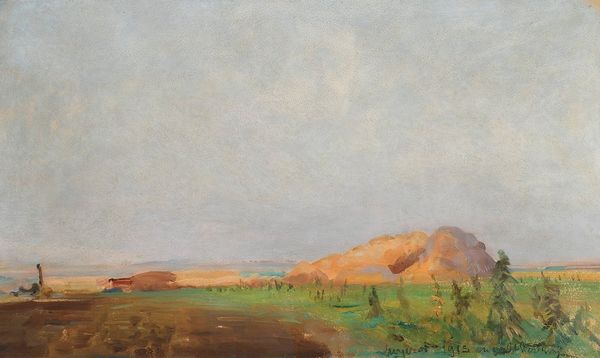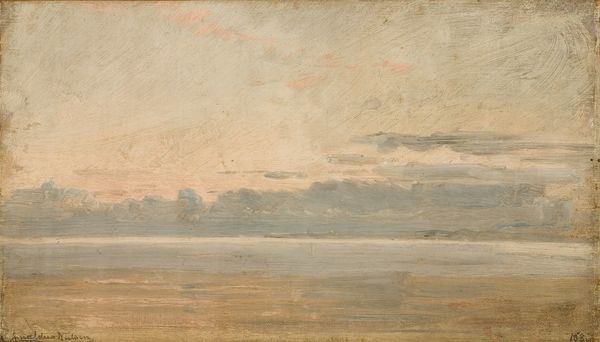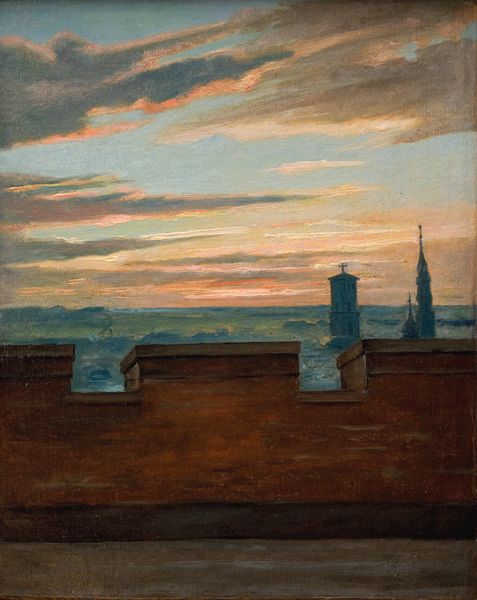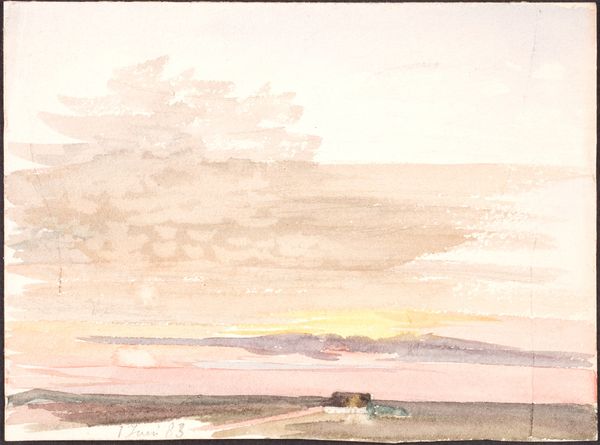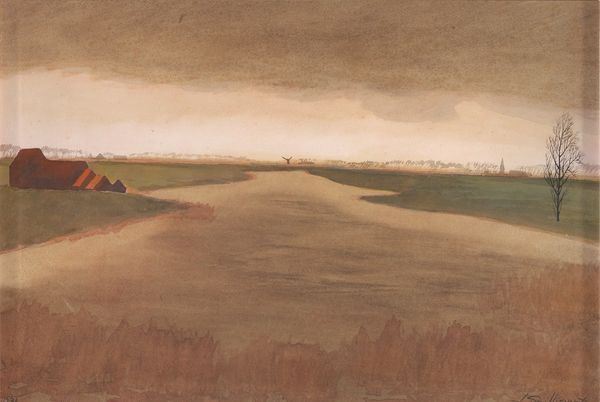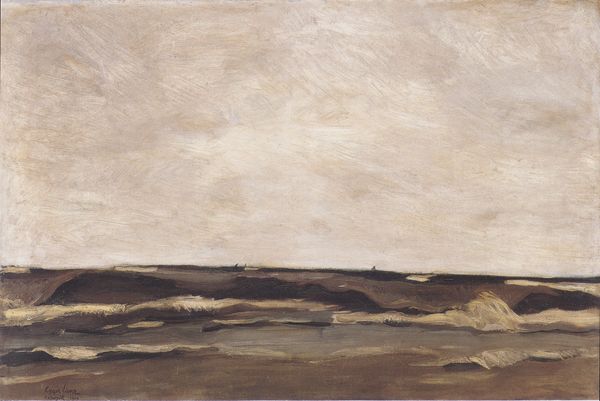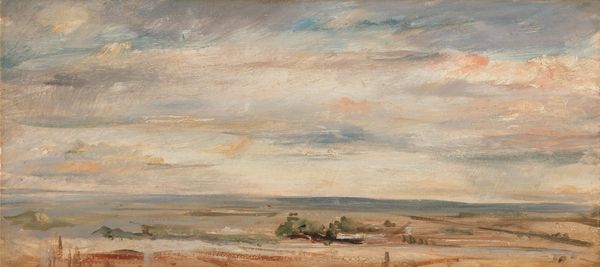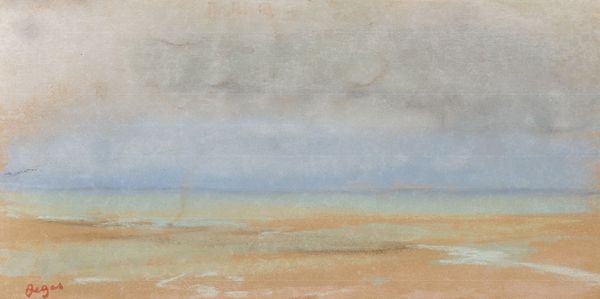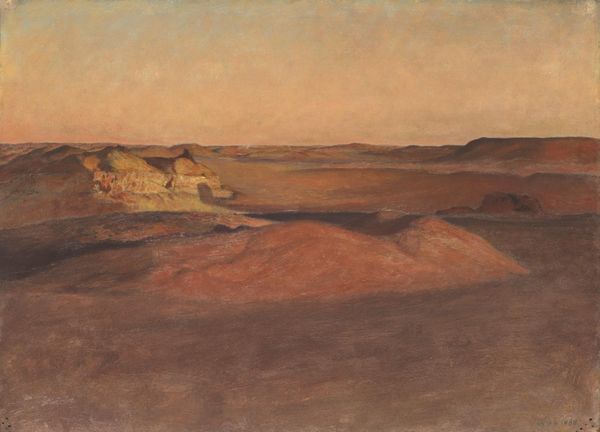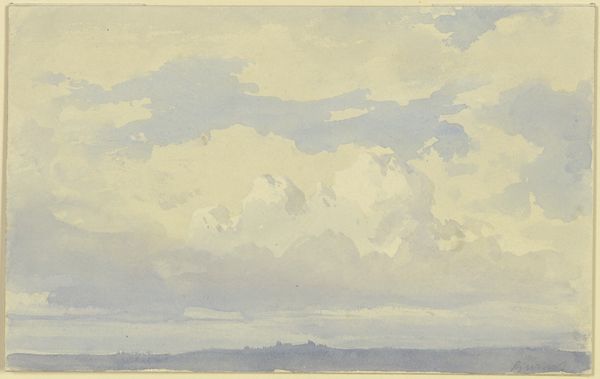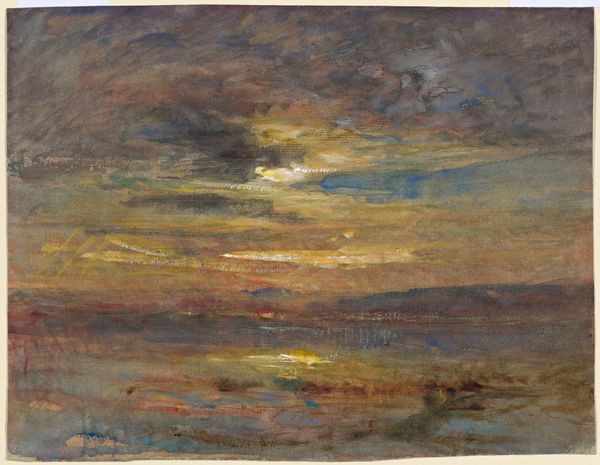
Dimensions: 31 cm (height) x 24.5 cm (width) (Netto), 42 cm (height) x 36.6 cm (width) x 7.3 cm (depth) (Brutto)
Editor: We’re looking at "The Lim Fjord in Jutland. Study," an oil on paper landscape created by Christen Dalsgaard in 1851. It’s a simple composition, mostly sky and water, but there’s something melancholic about it. What do you see in this piece? Curator: It’s deceptively simple, isn't it? I see a powerful statement about land, ownership, and the relationship between the people and the Jutland landscape in mid-19th century Denmark. This was a period of intense national self-definition, but also stark economic inequalities in rural areas. The romantic portrayal masks a struggle for resources. Editor: Struggle? How so? Curator: Dalsgaard painted this during a period of significant land reforms in Denmark. Consider the horizon line: the houses appear small, almost fragile, against the vast sky. Who has the power in this image, and who does not? And what is the significance of placing the houses along the ridge rather than fully revealing daily lives? Editor: I guess the sheer size of the sky and water dwarf those homes, implying a lack of control. It makes me wonder who actually benefitted from those land reforms and at what cost. Curator: Precisely. The 'romantic' light almost idealizes the scene. But maybe this ‘idyll’ also masks a darker reality – a tension between the ideal and lived experience. What do you think that tension is expressing? Editor: Maybe a loss of traditional ways of life as industrialization started creeping in? I see that disconnect now—the beauty hides a potential for social critique. Curator: Exactly. Next time we view Romantic art, we have to remember whose stories aren't being shown as visibly. There is always some absent presence to investigate.
Comments
No comments
Be the first to comment and join the conversation on the ultimate creative platform.
